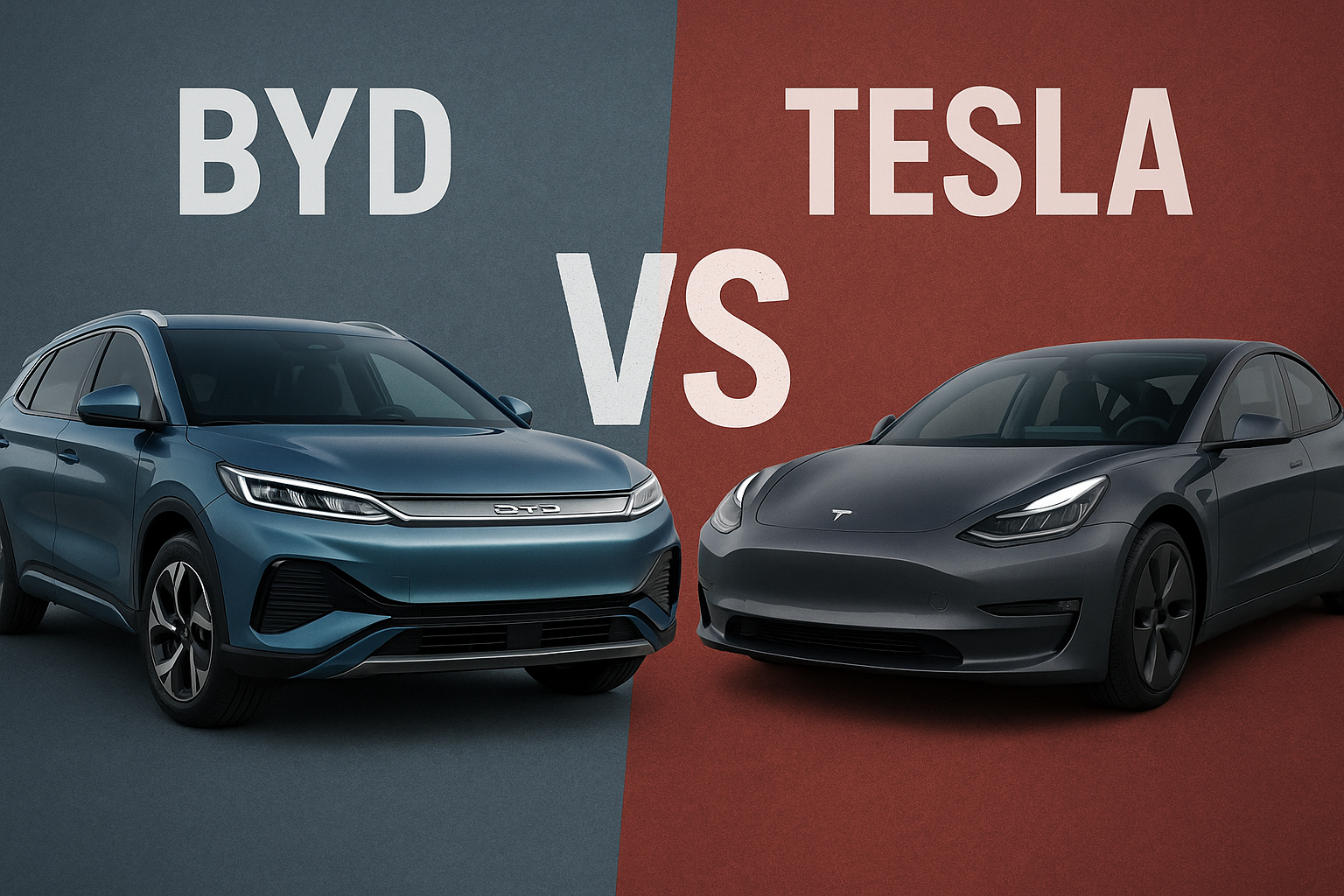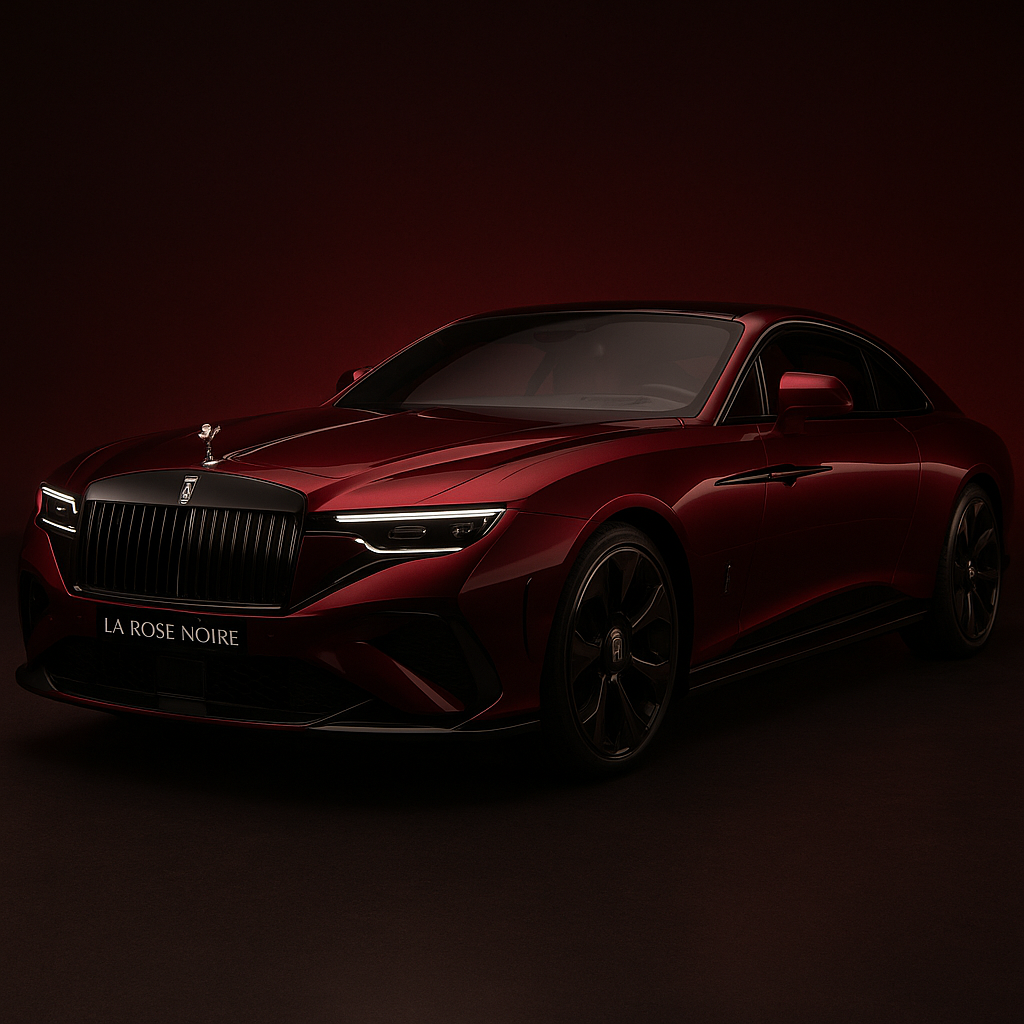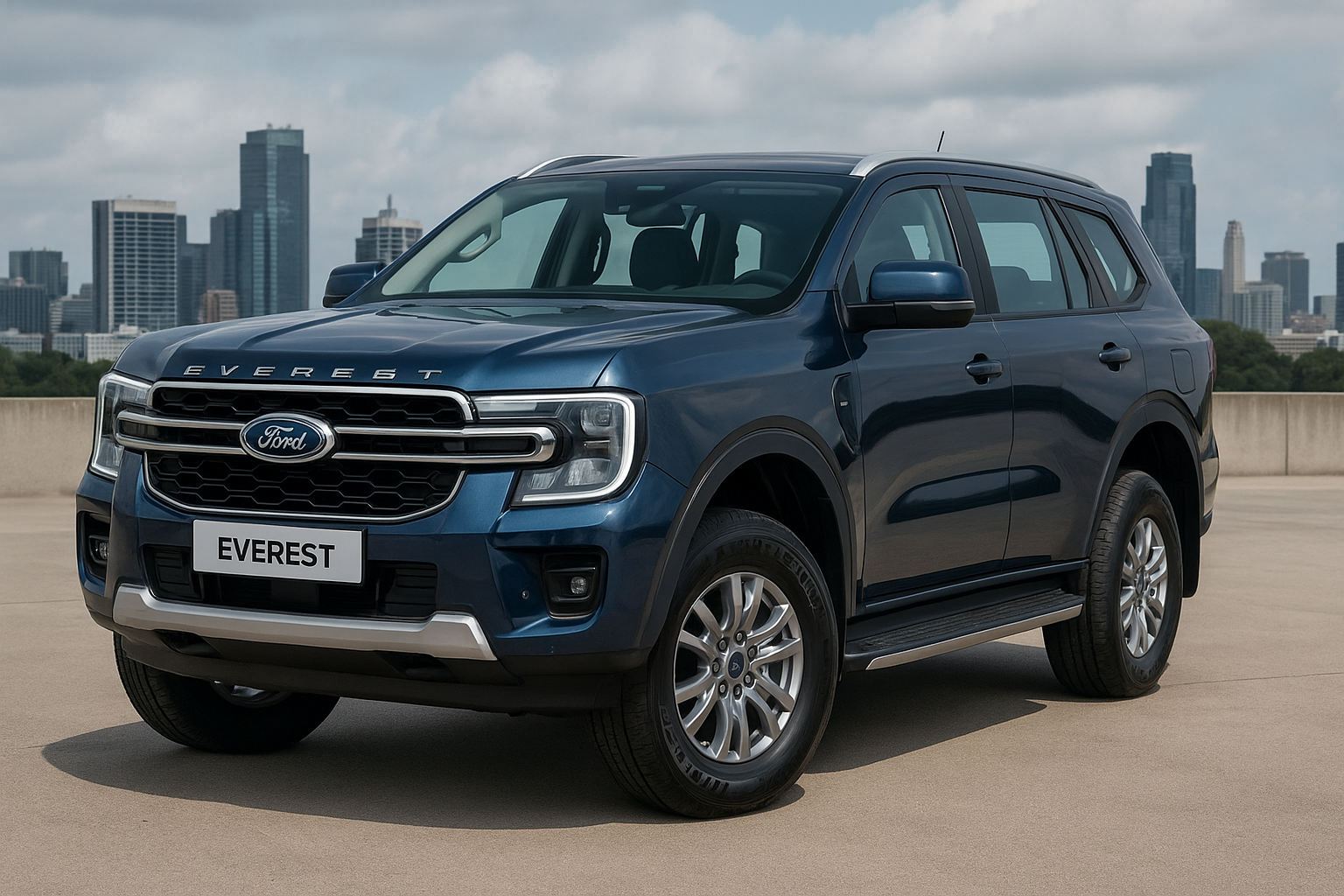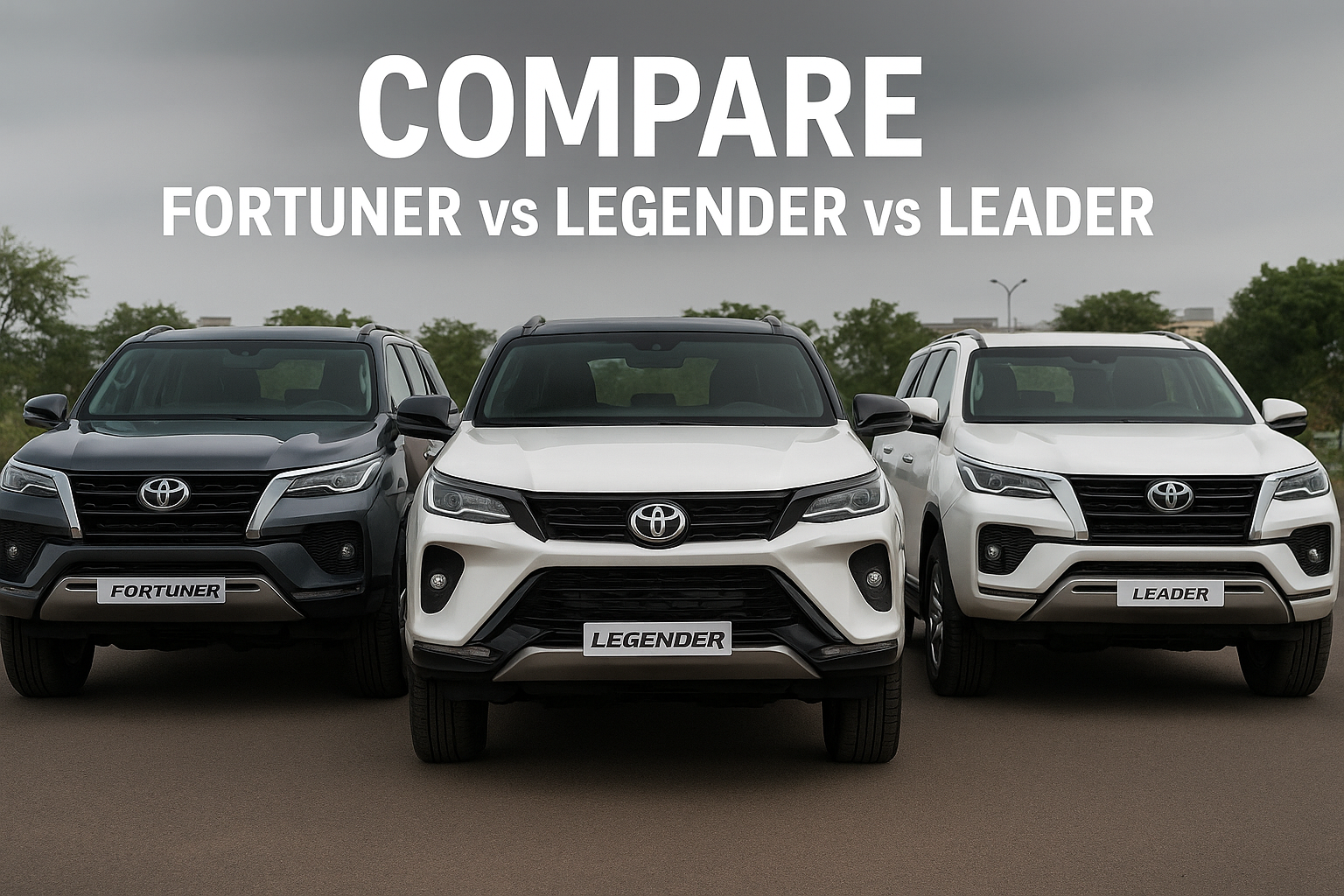BYD vs Tesla: The EV Titans Driving the Future
Tesla is likely the first name that comes to mind when you think of electric vehicles (EVs). But there’s another major player quietly — or not so quietly — challenging Tesla’s dominance: BYD. The Chinese automaker, short for Build Your Dreams, has become a major player in the global EV race.. In 2023, BYD even outsold Tesla in battery EVs in several quarters, signaling a shift in the market landscape.
So how do these two electric giants stack up against each other? Let’s dive into the BYD vs Tesla debate and compare their innovation, performance, pricing, design, and global strategy.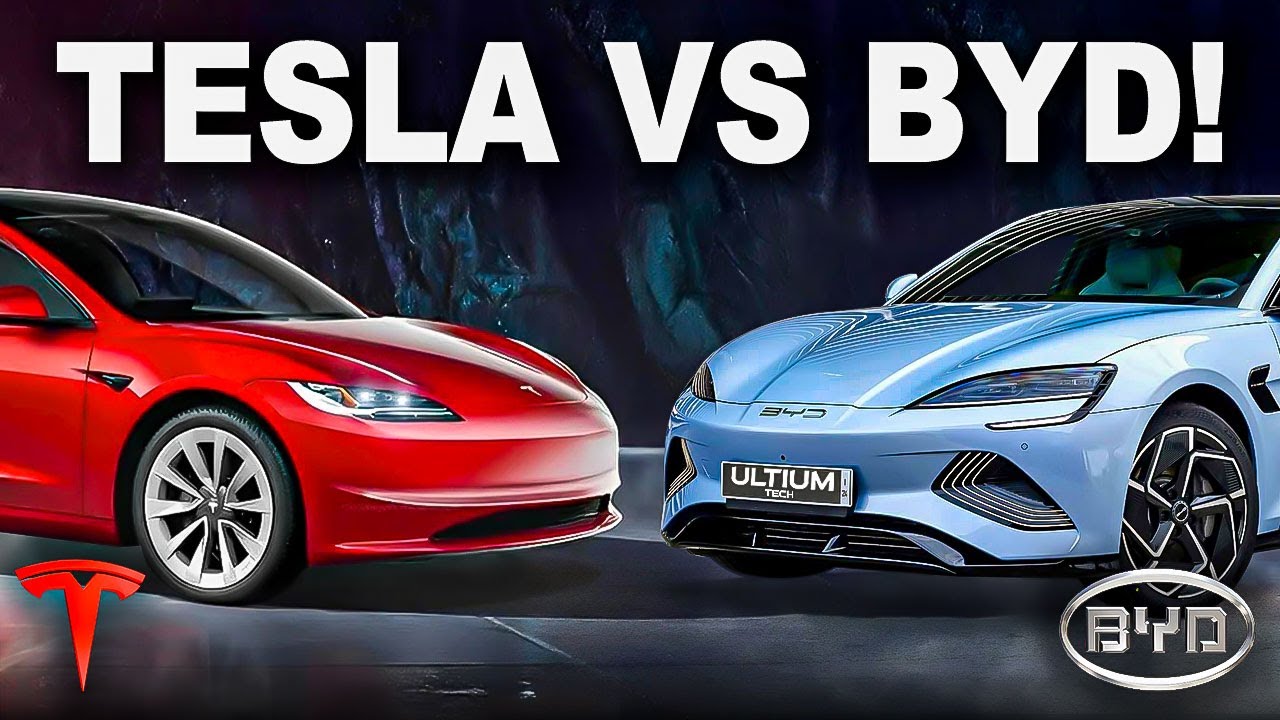
1. Company Vision and Strategy
Tesla, led by Elon Musk, revolutionized the EV industry with its mission to accelerate the world’s transition to sustainable energy. It pushes boundaries with autonomous driving, energy storage, and solar solutions.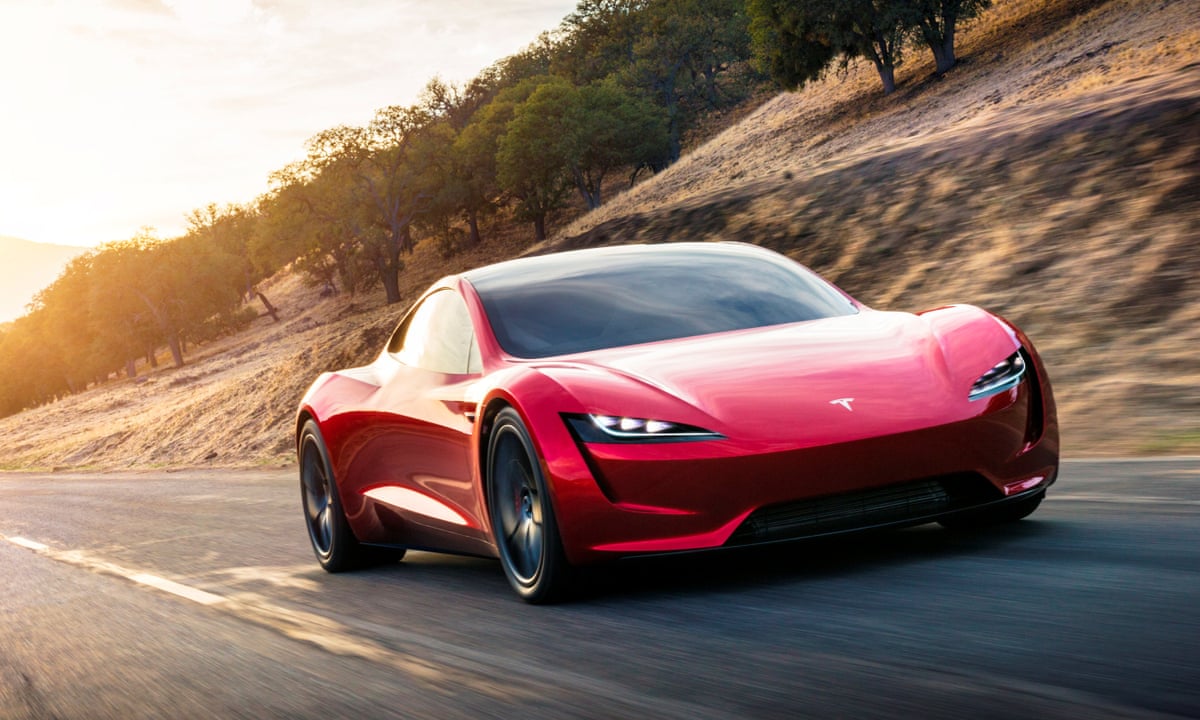
BYD, founded in 1995, started as a battery maker and evolved into an automaker using vertical integration — producing its own batteries, semiconductors, and electric drivetrains. While Tesla dominates in the U.S. and Europe, BYD owns China’s EV market and is now expanding into Asia, South America, and Europe.
2. Performance and Technology
In terms of performance, Tesla leads — especially with the Model S Plaid, which does 0–100 km/h in under 2 seconds. Tesla’s software, over-the-air updates, and Full Self Driving (FSD) tech give it an edge in automation.
BYD is closing the gap. Its Blade Battery is one of the safest and most efficient LFP batteries. While it doesn’t match Tesla’s speed, models like the Han EV and Seal offer a smooth, efficient ride at a lower cost..jpg)
3. Design and Build Quality
Tesla interiors are sleek and minimalist. The single-screen design in the Model 3 and Model Y works for some but feels basic to others. Build quality has had inconsistencies, with users reporting panel gaps and paint issues.
BYD, on the other hand, focuses more on detail and luxury. The Seal and Tang EV feature rotating infotainment screens, ambient lighting, and premium materials — often more upscale than similarly priced Teslas.
4. Range and Charging
Tesla vehicles are known for long range and efficiency. The Model 3 Long Range can exceed 570 km (WLTP) on one charge. Tesla’s Supercharger network is a huge plus for owners.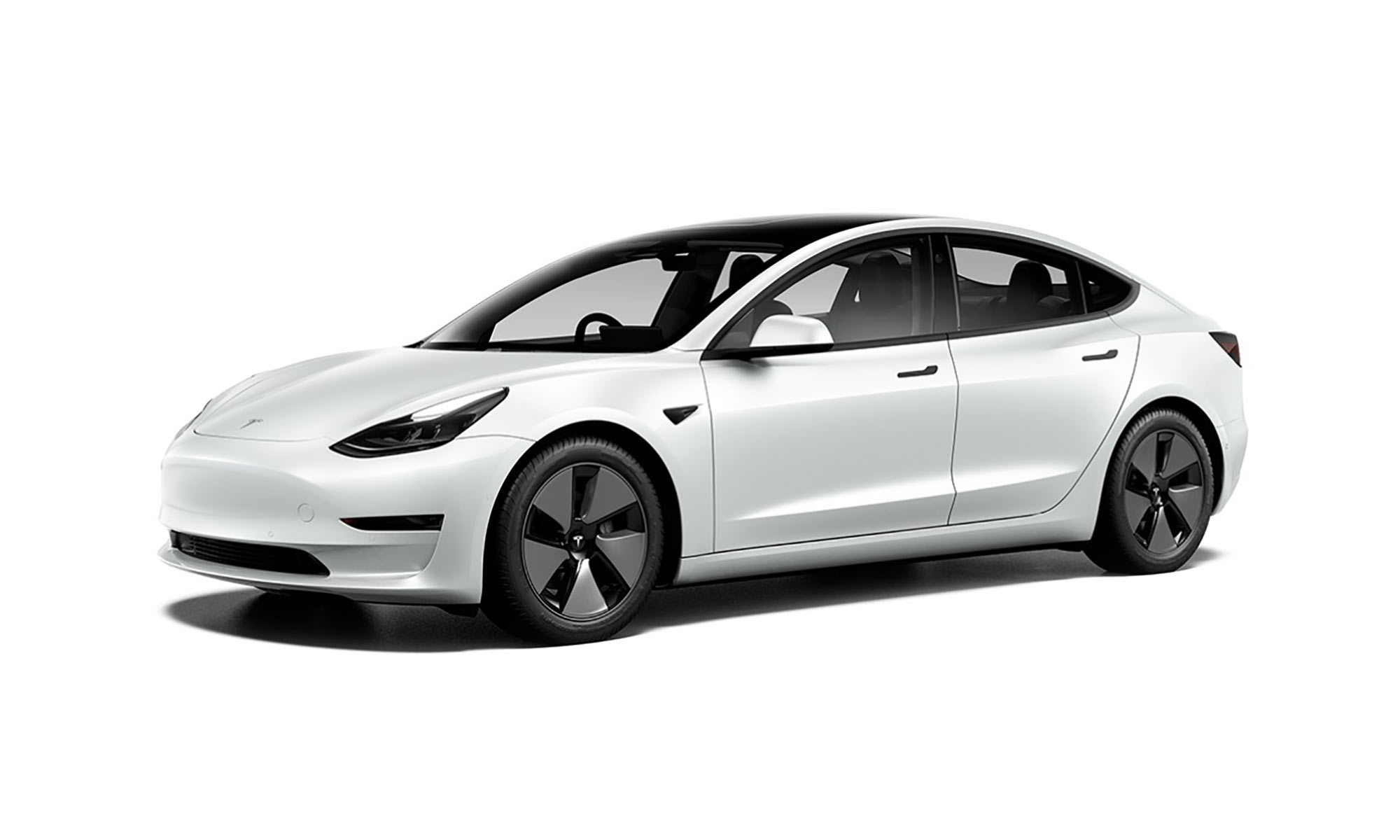
BYD EVs generally offer less range but are improving. The Han EV offers around 500 km (WLTP). While BYD lacks a proprietary charging network like Tesla, it’s building partnerships globally.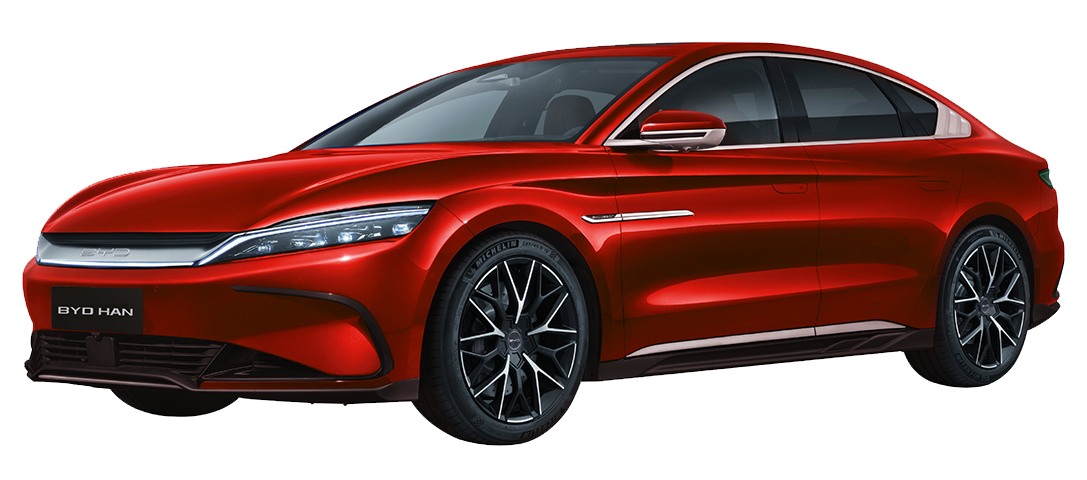
5. Pricing and Affordability
BYD’s biggest strength is value. The Dolphin and Atto 3 are well-equipped, stylish, and far cheaper than Teslas in the same category.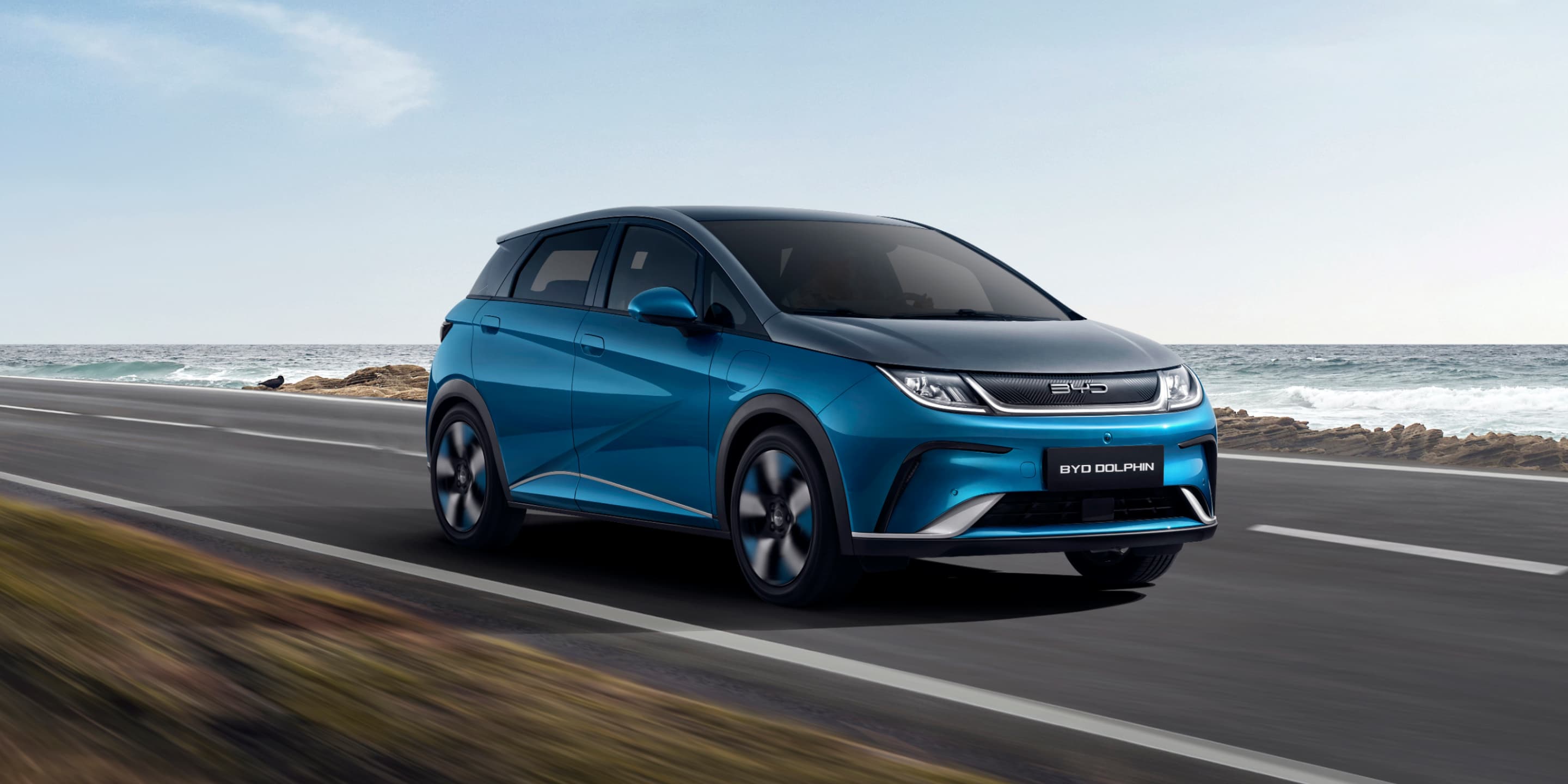
Tesla, positioned as a premium brand, has increased prices in many regions. Even with occasional discounts on the Model 3 and Model Y, they still cost more than comparable BYD models.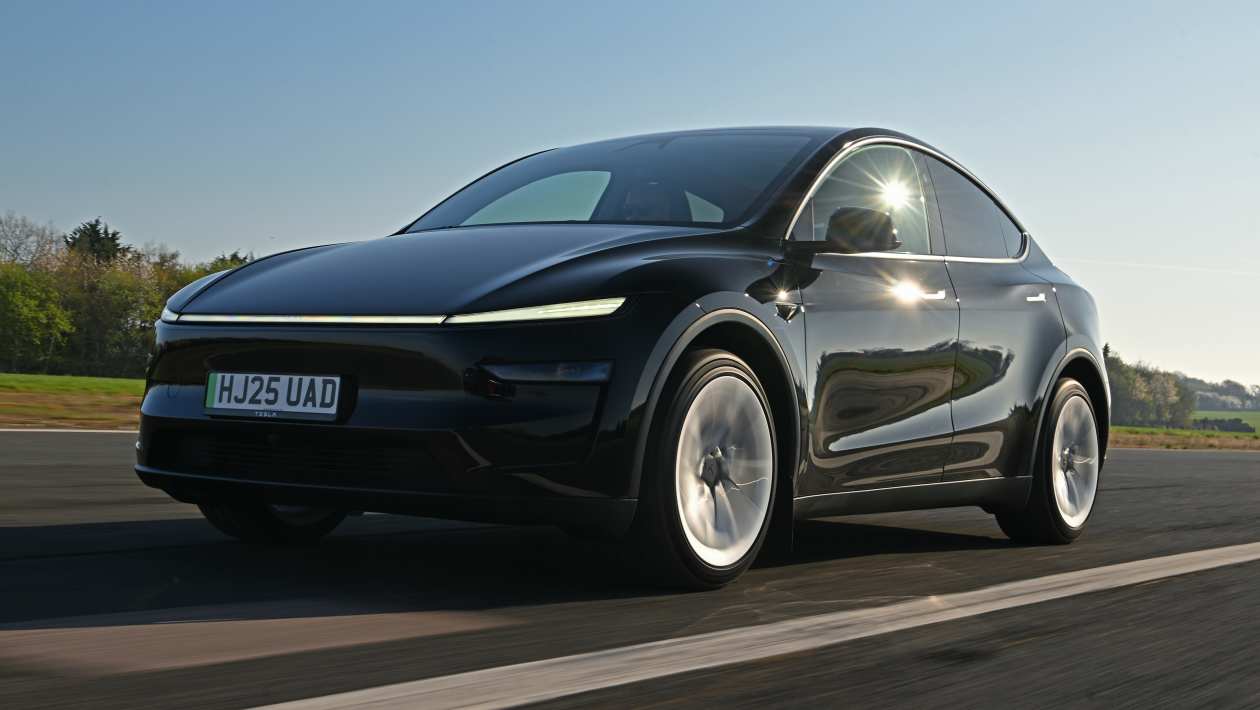
6. Market Value and Shares
As of mid-2025:
-
Tesla’s market cap is around $770 billion.

-
BYD’s market cap is approximately $95 billion.

-
Tesla’s shares (TSLA) trade on the NASDAQ and attract major attention, but they’re also volatile due to Musk’s influence and market shifts. BYD’s shares, listed in Shenzhen and Hong Kong, are more stable and supported by strong Chinese investor confidence. An early investment from Warren Buffett’s Berkshire Hathaway helped elevate BYD’s global reputation.
In short: Tesla dominates in value and media buzz, while BYD delivers consistent growth with strong fundamentals.
7. Global Reach and Expansion
Tesla is expanding its Gigafactories in the U.S., China, and Germany and has a strong foothold in developed markets. However, it faces stiff regulatory and infrastructure challenges in emerging markets.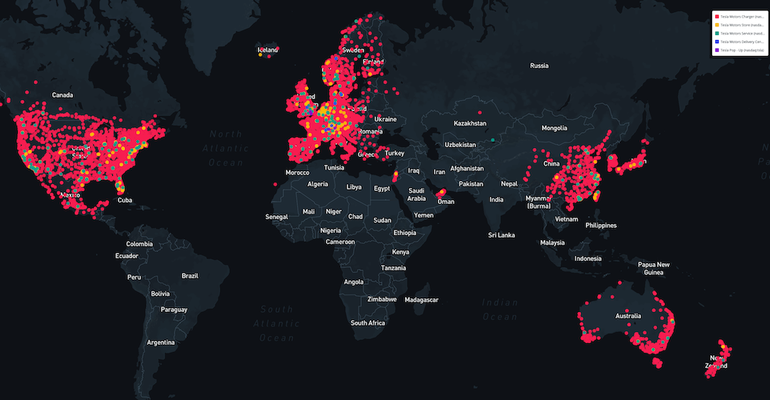
BYD, leveraging China’s scale and low production costs, is exporting to Europe, Southeast Asia, India, and Latin America. As of 2024, it became the world’s largest EV producer by volume, including BEVs and PHEVs.
8. Sustainability and Integration
Both brands invest heavily in sustainability. Tesla is expanding into lithium mining, solar energy, and battery recycling. However, it relies on third-party suppliers for some components.
BYD, with full vertical integration, makes its own batteries and chips, offering greater control over costs and supply — a major plus during shortages.
9. Who’s Winning the EV War?
Tesla remains the face of EV innovation. Its tech, branding, and performance are hard to beat. But BYD is catching up, not by mimicking Tesla, but by offering affordable, safe, and scalable EVs.
In markets like India, Southeast Asia, and Latin America, BYD may take the lead due to its competitive pricing and local strategy. Tesla still dominates in North America and Europe, especially among tech-savvy consumers.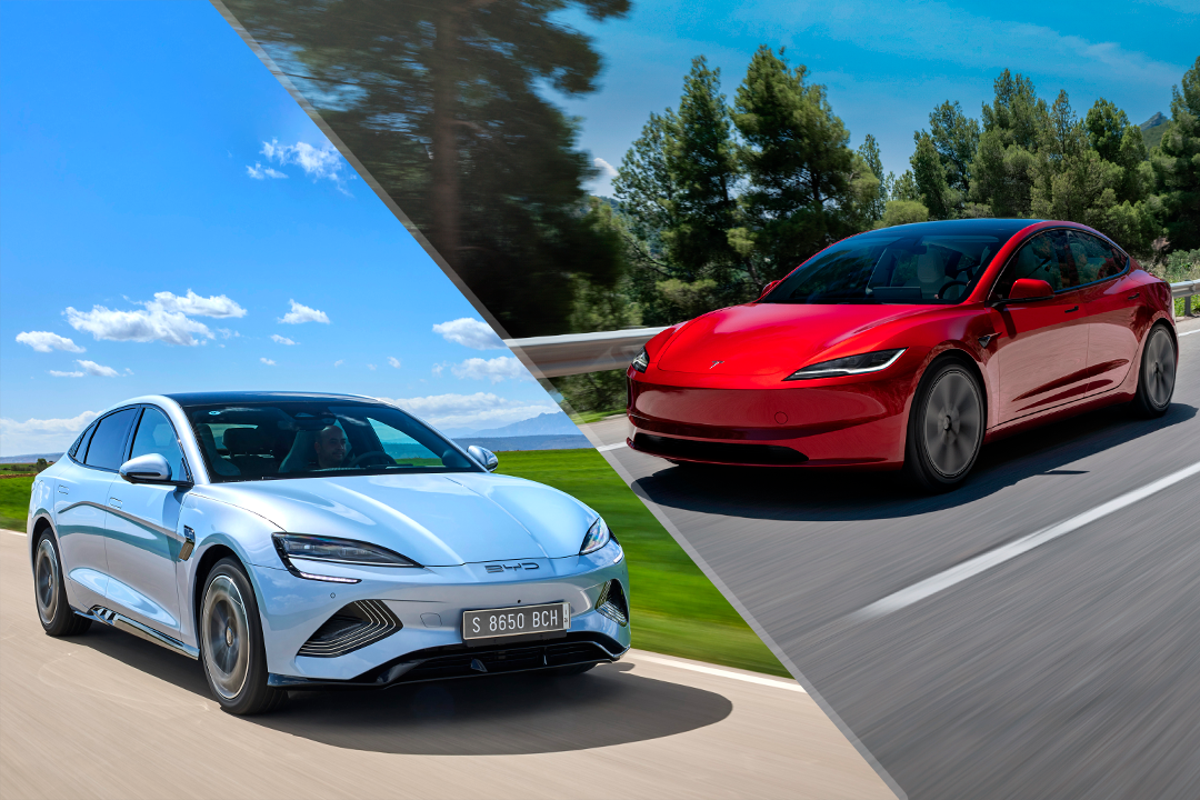
Conclusion: Two Paths, One Future
Tesla and BYD aren’t just rivals — they’re redefining the future of transportation. Tesla pushes tech boundaries; BYD delivers EVs at scale. Together, they demonstrate that electric vehicles are not just a trend — they are the future.
Whether you favor Tesla’s cutting-edge ambition or BYD’s smart affordability, one thing’s clear: the EV race is on, and the road ahead is 100% electric.
About US: The Minds Behind ModernTimex
In a digital world where trends evolve by the minute and attention spans are shorter than ever, staying informed isn’t just a luxury — it’s a necessity. That’s where the ModernTime Blog finds its purpose.
Built by three passionate friends — Tauheed Raza, Ayan Javed, and Abhay Mishra — the ModernTime Blog is a thoughtfully designed platform that delivers timely, relevant, and engaging content to the modern-day reader. It’s not just a blog — it’s a movement powered by curiosity, collaboration, and creativity.

